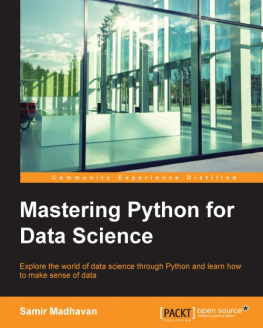P. G. Madhavan - Data Science for IoT Engineers
Here you can read online P. G. Madhavan - Data Science for IoT Engineers full text of the book (entire story) in english for free. Download pdf and epub, get meaning, cover and reviews about this ebook. year: 2022, publisher: Mercury Learning and Information, genre: Children. Description of the work, (preface) as well as reviews are available. Best literature library LitArk.com created for fans of good reading and offers a wide selection of genres:
Romance novel
Science fiction
Adventure
Detective
Science
History
Home and family
Prose
Art
Politics
Computer
Non-fiction
Religion
Business
Children
Humor
Choose a favorite category and find really read worthwhile books. Enjoy immersion in the world of imagination, feel the emotions of the characters or learn something new for yourself, make an fascinating discovery.
- Book:Data Science for IoT Engineers
- Author:
- Publisher:Mercury Learning and Information
- Genre:
- Year:2022
- Rating:3 / 5
- Favourites:Add to favourites
- Your mark:
- 60
- 1
- 2
- 3
- 4
- 5
Data Science for IoT Engineers: summary, description and annotation
We offer to read an annotation, description, summary or preface (depends on what the author of the book "Data Science for IoT Engineers" wrote himself). If you haven't found the necessary information about the book — write in the comments, we will try to find it.
Data Science for IoT Engineers — read online for free the complete book (whole text) full work
Below is the text of the book, divided by pages. System saving the place of the last page read, allows you to conveniently read the book "Data Science for IoT Engineers" online for free, without having to search again every time where you left off. Put a bookmark, and you can go to the page where you finished reading at any time.
Font size:
Interval:
Bookmark:

FOR
IOT ENGINEERS
LICENSE, DISCLAIMER OF LIABILITY, AND LIMITED WARRANTY
By purchasing or using this book and its companion files (the Work), you agree that this license grants permission to use the contents contained herein, but does not give you the right of ownership to any of the textual content in the book / disc or ownership to any of the information, files, or products contained in it. This license does not permit uploading of the Work onto the Internet or on a network (of any kind) without the written consent of the Publisher. Duplication or dissemination of any text, code, simulations, images, etc. contained herein is limited to and subject to licensing terms for the respective products, and permission must be obtained from the Publisher or the owner of the content, etc., in order to reproduce or network any portion of the textual material (in any media) that is contained in the Work.
MERCURY LEARNING AND INFORMATION (MLI or the Publisher) and anyone involved in the creation, writing, production, accompanying algorithms, code, or computer programs (the software), and any accompanying Web site or software of the Work, cannot and do not warrant the performance or results that might be obtained by using the contents of the Work. The author, developers, and the Publisher have used their best efforts to ensure the accuracy and functionality of the textual material and/or programs contained in this package; we, however, make no warranty of any kind, express or implied, regarding the performance of these contents or programs. The Work is sold as is without warranty (except for defective materials used in manufacturing the book or due to faulty workmanship).
The author, developers, and the publisher of any accompanying content, and anyone involved in the composition, production, and manufacturing of this work will not be liable for damages of any kind arising out of the use of (or the inability to use) the algorithms, source code, computer programs, or textual material contained in this publication. This includes, but is not limited to, loss of revenue or profit, or other incidental, physical, or consequential damages arising out of the use of this Work.
The data used throughout this text, including names of persons and companies are for instructional purposes only. They have been tested with care but are not guaranteed for any intent beyond their educational purpose.
The sole remedy in the event of a claim of any kind is expressly limited to replacement of the book and only at the discretion of the Publisher. The use of implied warranty and certain exclusions vary from state to state, and might not apply to the purchaser of this product.
Companion files are available for downloading from the publisher by writing to .
FOR
IOT ENGINEERS
A Systems Analytics Approach
P. G. Madhavan, Ph.D.

Copyright 2022 by MERCURY LEARNING AND INFORMATION LLC. All rights reserved.
This publication, portions of it, or any accompanying software may not be reproduced in any way, stored in a retrieval system of any type, or transmitted by any means, media, electronic display or mechanical display, including, but not limited to, photocopy, recording, Internet postings, or scanning, without prior permission in writing from the publisher.
Publisher: David Pallai
MERCURY LEARNING AND INFORMATION
22841 Quicksilver Drive
Dulles, VA 20166
www.merclearning.com
1-800-232-0223
P. G. Madhavan. Data Science for IoT Engineers.
ISBN: 978-1-68392-642-9
The publisher recognizes and respects all marks used by companies, manufacturers, and developers as a means to distinguish their products. All brand names and product names mentioned in this book are trademarks or service marks of their respective companies. Any omission or misuse (of any kind) of service marks or trademarks, etc. is not an attempt to infringe on the property of others.
Library of Congress Control Number: 2021942159
212223321 Printed on acid-free paper in the United States of America.
Our titles are available for adoption, license, or bulk purchase by institutions, corporations, etc.
For additional information, please contact the Customer Service Dept. at 800-232-0223(toll free).
All of our titles are available in digital format at academiccourseware.com and other digital vendors.
The sole obligation of Mercury Learning and Information to the purchaser is to replace the book, based on defective materials or faulty workmanship, but not based on the operation or functionality of the product.
To my wife, Ann
This book is the third iteration of the book I originally published in 2016 as Systems Analytics. The title reflected a new development effort in the field of machine learning, grounded firmly in systems theory. My intention in writing the first edition was to bring mathematically trained graduates in engineering, physics, mathematics, and allied fields into data science.
The objective of this edition, Data Science for IoT Engineers, remains the same. Part I, where I develop machine learning (ML) algorithms from the background of engineering courses such as control theory, signal processing, etc. is largely unchanged. However, dynamical systems-based Part II now takes a more detailed Multi-Input-Multi-Output (MIMO) systems approach, and develops a new and important form of digital twins called causal digital twin. This topic is significant, because on the one hand, digital twin is the seat of ML & AI in IoT solutions, but more important, causality is a critical factor in enabling prescriptive analytics, which is the real promise of Internet of Things (IoT). An epilogue has been added that introduces a new theory of random fields; it is shown that a new second-order property might have significant practical applications, and some of these are discussed.
In this part, we bring together machine learning, systems theory, linear algebra and digital signal processing. The intention is to make clear the similarity of basic theory and algorithms among these disparate fields. Hands-on exposure to machine learning is provided. This part concludes with a complete description of modern machine learning and a new ontology grounded in probability theory.
With the realization that business solutions are not one and done and they require ongoing measurement, tracking and fine-tuning, we embed machine learning in a closed-loop, real-time systems framework adaptive machine learning This naturally leads to the formal development of state-space formulation, Bayesian estimation, and Kalman filter. We develop a universal nonlinear, time-varying, dynamical machine learning solution which can faithfully model all the essential complexities of real-life business problems, and show how to apply it.
Developing the systems theme into the framework of digital twins as the action center for IoT-related machine learning, we explore several types of digital twins: (1) display, (2) forward and (3) inverse. Inverse digital twin is an example of a powerful form of causal modeling that captures the dynamics or kinetics of machinery in industrial applications. In the epilogue, we introduce some future development possibilities for data science from a complexity point of view.
Font size:
Interval:
Bookmark:
Similar books «Data Science for IoT Engineers»
Look at similar books to Data Science for IoT Engineers. We have selected literature similar in name and meaning in the hope of providing readers with more options to find new, interesting, not yet read works.
Discussion, reviews of the book Data Science for IoT Engineers and just readers' own opinions. Leave your comments, write what you think about the work, its meaning or the main characters. Specify what exactly you liked and what you didn't like, and why you think so.

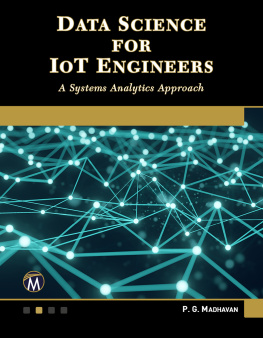
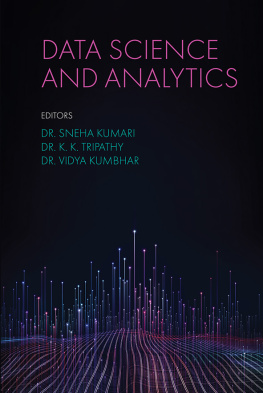
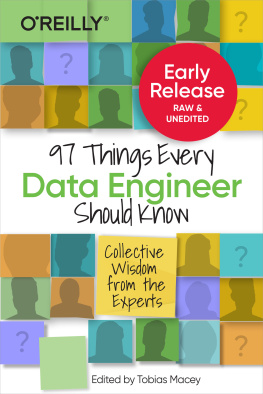
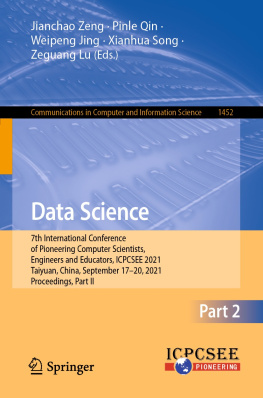
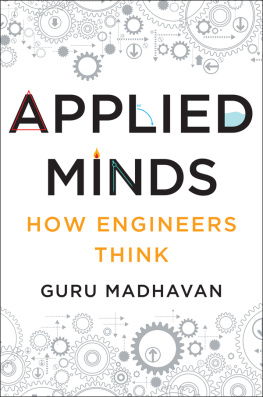
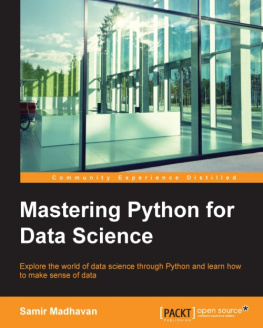
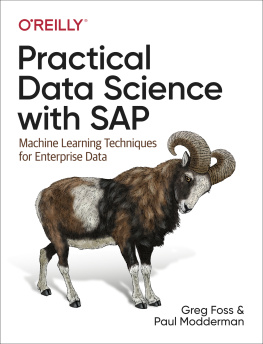

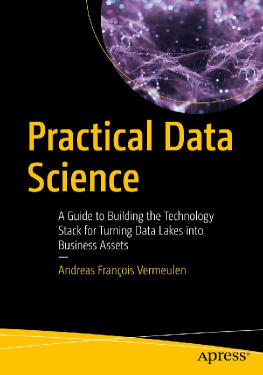
![Samir Madhavan [Samir Madhavan] - Mastering Python for Data Science](/uploads/posts/book/119623/thumbs/samir-madhavan-samir-madhavan-mastering-python.jpg)

